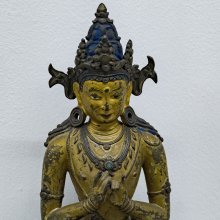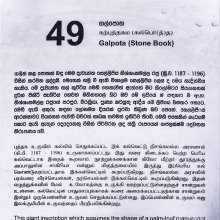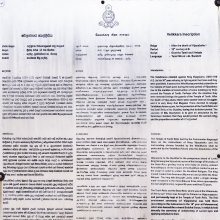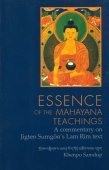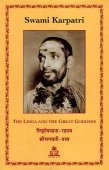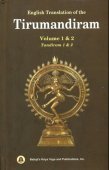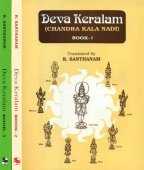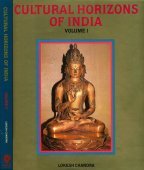Lineage: 1 definition
Introduction:
Lineage means something in Hinduism, Sanskrit. If you want to know the exact meaning, history, etymology or English translation of this term then check out the descriptions on this page. Add your comment or reference to a book if you want to contribute to this summary article.
Images (photo gallery)
In Hinduism
Purana and Itihasa (epic history)
Source: Shodhganga: Elements of Art and Architecture in the Trtiyakhanda of the VisnudharmottarapuranaLineage (in Sanskrit: vamsha) refers to one of the Five characteristics of Puranas or Puranic literature: a category of ancient Sanskrit texts which gives a huge contribution in the development of Indian literature.—According to the Matsyapurana and the Vayupurana, there are five characteristic features of Puranas. These are—sarga, pratisarga, vamsha, manvantara and vamshanucarita.

The Purana (पुराण, purāṇas) refers to Sanskrit literature preserving ancient India’s vast cultural history, including historical legends, religious ceremonies, various arts and sciences. The eighteen mahapuranas total over 400,000 shlokas (metrical couplets) and date to at least several centuries BCE.
See also (Relevant definitions)
Full-text (+1697): Anvaya, Santati, Gotra, Vamsha, Parampara, Samtana, Atisha, Jayülpa, Geshé tönpa, Vairocanabhadra, Aryavimuktisena, Dombipa, Aryadeva, Simhabhadra, Varasena, Candrakirti, Sauvarnadvipa, Vinayasena, Atishadipamkara, Anvavaya.
Relevant text
Search found 192 books and stories containing Lineage; (plurals include: Lineages). You can also click to the full overview containing English textual excerpts. Below are direct links for the most relevant articles:
Blue Annals (deb-ther sngon-po) (by George N. Roerich)
Chapter 3 - Abhidharma lineages < [Book 6 - The Origin of the Mādhyamika (middle way)]
Chapter 3c - Lineages belonging to rong zom < [Book 3 - Early translations of Secret Mantra]
Chapter 6 - Lineage of the pratimokṣa vow < [Book 1 - The beginning of the story of the Doctrine]
Banner of the Arahants (by Bhikkhu Khantipalo)
Part 2 - Discourse On The Noble Lineages < [Appendix I]
Chapter 3 - The Sangha And The Development Of Vinaya
Tibet (Myth, Religion and History) (by Tsewang Gyalpo Arya)
2. The Three Traditional Theories < [Chapter 3 - Nyatri Tsanpo; The First King of Tibet]
5. Early Bon and Later Buddhist -Amalgamation < [Chapter 3 - Nyatri Tsanpo; The First King of Tibet]
6. Religious Revival < [Chapter 6 - Tonpa Shenrab Mibo and Bon Religion]
Historical Elements in the Matsya Purana (by Chaitali Kadia)
Human History in the Matsya Purāṇa (Introduction) < [Chapter 6 - Human history in the Matsya-Purāṇa]
Human History in the Purāṇa < [Chapter 3 - Historical elements in the Mahā-Purāṇas]
Puru dynasty < [Chapter 6 - Human history in the Matsya-Purāṇa]
Hindu Pluralism (by Elaine M. Fisher)
Śaṅkarācāryas and Smārta Brahmins < [Chapter 2 - The Making of the Smārta-Śaiva Community of South India]
The Smārta-Śaiva community of South India (Introduction) < [Chapter 2 - The Making of the Smārta-Śaiva Community of South India]
The Making of a Hindu Sectarian Community < [Conclusion—A Prehistory of Hindu Pluralism]
Brihad Bhagavatamrita (commentary) (by Śrī Śrīmad Bhaktivedānta Nārāyana Gosvāmī Mahārāja)
Verse 2.1.200 < [Chapter 1 - Vairāgya (renunciation)]
Verse 1.1.41-42 < [Chapter 1 - Bhauma (the earthly plane)]
Verse 2.1.202 < [Chapter 1 - Vairāgya (renunciation)]
Related products
